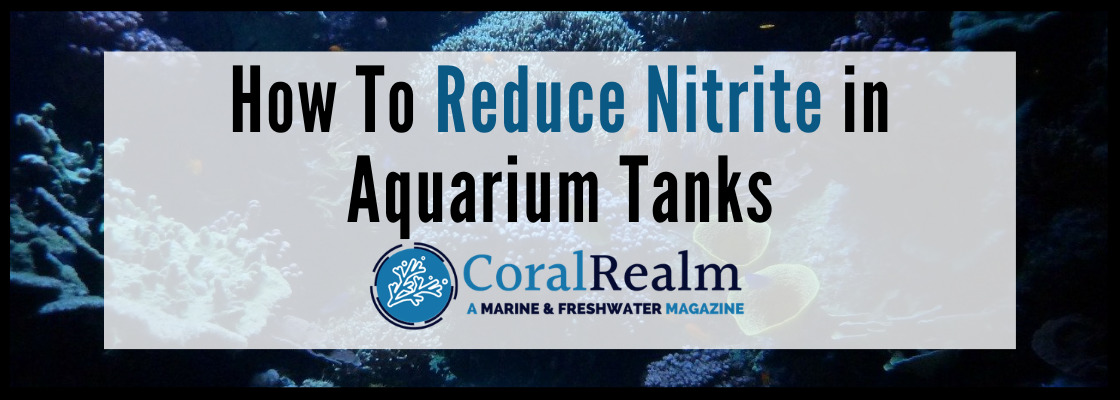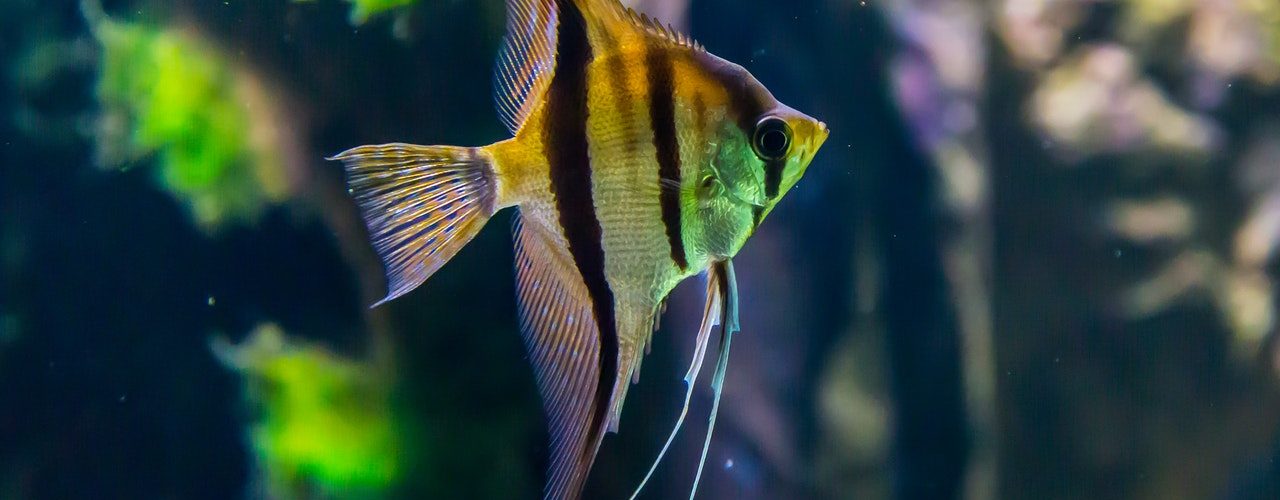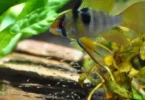Last Updated on November 19, 2022 by Matt
The nitrogen cycle is a natural and essential part of life, both in aquariums and in the wider world. This process is also the source of nitrite in aquarium tanks.
It is completely natural to have nitrite in aquariums. It would be impossible to stop the nitrogen cycle from occurring and producing nitrite.
However nitrite is extremely toxic to fish and other animal life. In this article we will explain where nitrite comes from, how it is removed, what effect high nitrite levels have in the tank and what you can do to reduce nitrite concentration.
IN THIS ARTICLE
How does Nitrite Occur In Aquariums
As we have already mentioned, nitrite is a natural part of the nitrogen cycle. Have a refresher of this cycle if you want, it will give you a better understanding of this article!
We will give you a quick refresher here anyway. As food waste and other organic matter such as fish waste and plant matter decomposes, ammonia is released. Ammonia is also released into the water column by fish through their gills as a waste product from when they digest food.
During a process called nitrification, nitrifying bacteria use this ammonia and convert it to nitrite. Nitrosomonas is a very common nitrifying bacteria which fuels this process.
Other nitrifying bacteria, Nitrobacter is a usual suspect, use nitrite and convert it to nitrate.
Nitrification is an aerobic process; it needs the presence of oxygen. These nitrifying bacteria are primarily found in the biological filtration element of aquarium filters, but are also found in the substrate. This process is incredibly important, as ammonia is very toxic, and causes ammonia poisoning.
What Causes High Aquarium Nitrite Levels
We have given a brief overview of how nitrite is formed in the tank; it is converted from ammonia by nitrifying bacteria such as Nitrosomonas.
Ammonia is released naturally by fish as they process food, and by decomposing material in the aquarium.
You can probably guess where this is going now! The most common cause of high levels of nitrite in aquarium tanks is excess decaying matter. Unless rotting matter is removed immediately it will quickly release ammonia into the water column to be converted into nitrite.
There are a number of reasons why there can be an excess of organic decaying matter in a fish tank, but there can also be other reasons why nitrite levels rise. Some of them are listed below:
- Infrequent tank or filter cleaning
- Infrequent water changes
- Overfeeding
- Biological filter crash
- Overstocking
Infrequent tank and filter cleaning can allow decaying organic matter to build up. Not using an aquarium vacuum cleaner to remove debris laying on the substrate will allow this to decay and release ammonia with fuels nitrite production. Not removing algae from the glass can add to the decaying matter. Filters need regular maintenance otherwise mechanical media can become clogged, which increase ammonia and nitrite levels. Many chemical media need cleaning or changing regularly to remain functional. Biological media need cleaning to remove debris which gets caught.
Water changes are important to remove excess floating debris and to remove nitrite. Not performing regular water changes can enable nitrite levels to rise.
Both overfeeding and overstocking are a common cause of increased nitrite in aquarium tanks.
Overfeeding will greatly increase the amount of decomposing material in the tank. It will also lead to the filter becoming clogged a lot faster. Overfeeding along with infrequent maintenance can quickly lead to a nitrite spike.
Overstocking is the presence of too many fish for the size of the aquarium. If you have too many fish then the amount of waste they produce can quickly overwhelm the biological filter. Remember not only do they produce waste to be decomposed to ammonia, they also release ammonia directly into the water column. This ammonia is converted to nitrite which can rise rapidly.
A biological filter crash one of the worst things that can happen in the tank. This is where something happens to kill the bacteria which act as the biological filter. Whilst the primary symptom of a biological filter crash is increased ammonia levels, nitrite levels will rise too. Not using a water conditioner during water changes can cause a crash; many toxic chemicals such as chlorine are present in tap water.
What Is The Effect of High Aquarium Nitrite Levels?

It is important to know exactly why nitrite is so toxic to vertebrates, including fish, so that you have all the information possible in order to combat it.
Nitrite converts haemoglobin, the protein responsible for carrying oxygen, into methaemoglobin. This sounds confusing, but basically haemoglobin carries oxygen from the gills and deposits it where it needs to be. However methaemoglobin is unable to release oxygen. Therefore nitrite greatly reduces the ability of the blood to carry oxygen. So toxic nitrite levels essentially prevent fish from getting enough oxygen, and they suffocate.
As nitrite concentration in the aquarium rises you will see your fish starting to display the symptoms of nitrite poisoning. Here are some symptoms you should always be on the careful look out for:
- Rapid gill movement
- Inactivity
- Rapid gasping for oxygen near the surface
- Bunching near filter outlets, or other sources of oxygenated water
- Browning gills
As nitrite greatly reduces the amount of oxygen that is available to fish, they will behave as if they are suffocating. This is displayed by rapid gill movements, and hanging out near the surface and sources of fresh oxygenated water.
However this could just be due to a lack of oxygen in the water column, not excess nitrite. A way of telling it is nitrite poisoning is to look at the gills. As haemoglobin is turned to methaemoglobin, the blood will turn from red to brown. This is why nitrite poisoning is sometimes called the brown blood disease. The gills are a site of extremely high blood flow, and as such are normally bright red. If they turn brown it is time to test the water immediately.
What Nitrite Level Is Healthy in Aquariums?
Nitrite is extremely toxic to all animals, including fish.
To be a healthy setup the concentration of nitrite in aquarium tanks needs to be 0 parts per million (ppm).
Even a nitrite concentration of 0.5 ppm can greatly stress fish, and levels exceeding 20 ppm can be very lethal.
That might seem like a big ask, but the same goes for ammonia in aquariums; both nitrite and ammonia are extremely toxic to fish and they cannot be allowed to accumulate.
In an ideal tank environment, as ammonia and nitrite are produced they are converted by nitrifying bacteria in the biological filter and the substrate to the less harmful nitrate. And as nitrate is produced denitrifying bacteria convert it to atmospheric nitrogen.
If you don’t have a reading of zero when you test your aquarium’s water then you should act to increase the presence of nitrifying and denitrifying bacteria. If you don’t act quickly then you are at real risk of the nitrite levels spiking and causing nitrite poisoning.
How To Reduce Nitrite in Aquarium Tanks

If you have discovered that you have high levels of nitrite in your aquarium, you will need to do something about it very quickly.
The quickest way of reducing nitrite in aquarium tanks is by undertaking a large water change. Water changes can be made easier using a product like the Python water changer.
Make sure that you use a good water conditioner to treat the tap water, and ensure that the temperature is also the same. Tap water can contain ammonia, nitrite, and nitrate, and water conditioner will remove these as well as any chemicals or heavy metals. You want to ensure the temperature is the same, as a change in temperature in a large water change can shock your fish greatly. Put the treated water into a bucket, and use a spare aquarium heater until the water is the temperature you require.
Another way of reducing nitrite in aquarium tanks is to add chemical or biological media into your filter if you haven’t got any already. Or if you do have biological media, make sure that it is of good quality, such as Seachem Matrix. A good quality nitrite removing chemical media is API Nitra-Zorb.
Water conditioners are also a good way of removing nitrite from aquariums. If you undertake a water change and still see nitrite present in the tank, adding a dose of Seachem Prime Water Conditioner will bind nitrite and allow the filter to remove it from the water column. It will also bind ammonia that may be present in the tank, along with any heavy metals and other contaminants.
Preventing High Nitrite Levels
As with anything, preventing high nitrite levels from occurring in the first place is better than dealing with the consequences.
There are a few ways that you can ensure that nitrite levels stay low.
Firstly, clean and maintain the tank and clean the filter regularly and properly. Ensure to clean and maintain the protein skimmer as well if you have a saltwater setup.
Use an aquarium vacuum cleaner to remove food waste and debris from the substrate.
Ensure that you have an adequate aquarium filtration system. Ideally you want a combination of all three of mechanical, biological, and chemical filtration.
There are chemical media that can remove organic nitrogenous compounds that will otherwise be broken down to ammonia. Less organic nitrogen means less ammonia, and therefore less nitrite.
A good biological filter will enable nitrifying bacteria to grow and proliferate. Nitrifying bacteria convert ammonia to nitrite, but also nitrite to nitrate. A good healthy biological filter system will remove the nitrite from the water column as it is produced. Using an aquarium bacteria supplement such as API Quick Start or Seachem Stability will help cycle the tank quicker and will also help to reintroduce these bacteria after filter cleanings.
Testing Nitrite in Aquariums
You should test your aquarium water regularly for nitrite.
If you notice your fish behaving strangely or displaying any of the symptoms of nitrite poisoning then you should test the water immediately. The following test kits are all brilliant options for testing the level of nitrite in your tank.
The nitrite testing kit by Salifert has two different scales; one which accurately measures nitrite between 0.002 – 0.12 mg/L (ppm), and also a medium scale which ranges from 0.02 – 1.2 mg/L.
All of these options can be used both in freshwater and saltwater tanks.
Conclusion
Hopefully this article has given you the information you require for if and when you find nitrite in your aquarium.
You will need to act fast; nitrite is extremely toxic, even in low concentrations. Be on the lookout for signs of nitrite poisoning in your fish.
Overstocking and overfeeding are common causes of increased nitrite levels in fish tanks, and you can prevent nitrite from building up by regularly cleaning and having a good, well maintained filter which has good quality biological and chemical filtration.








